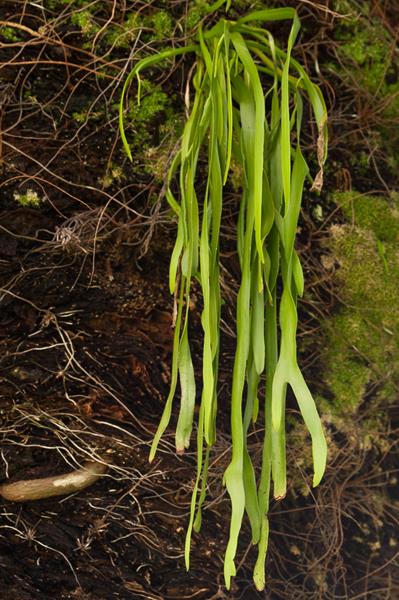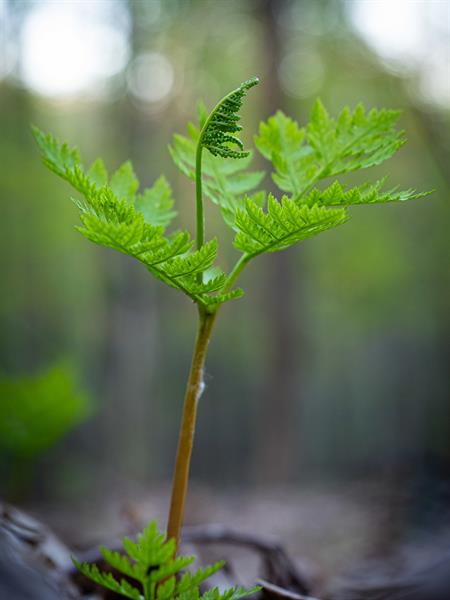
A family of 10 genera and about 115 species (as treated by PPG I 2016). The Ophioglossaceae is only distantly related to the leptosporangiate ferns; Kuo et al. (2011), Pryer et al. (2004), and PPG I (2016) indicate that it is most closely related to Psilotaceae. There is an increasing consensus that Botrychium as often very broadly circumscribed should be separated into four or five genera, of which three are native in our area: Botrypus, Botrychium, and Sceptridium (Shinohara et al. 2013; Dauphin, Vieu, & Grant 2014; Hauk, Parks, & Chase 2003; Hauk 1996; PPG I 2016; Zhang et al. 2020).
ID notes:The family Ophioglossaceae is characterized by bearing spores on a specialized and modified "leaf", the sporophore. The sterile leaf (the trophophore) characteristically has a rather fleshy or rubbery texture (when alive).
Ref: Dauphin, Vieu, & Grant (2014); Hauk (1996); Hauk, Parks, & Chase (2003); Kuo et al. (2011); Kuo et al. (2024); PPG I (2016); Pryer et al. (2004); Shinohara et al. (2013); Wagner & Wagner (1993) In Flora of North America Editorial Committee (1993b); Wagner In Kramer & Green (1990); Zhang & Zhang (2022); Zhang et al. (2020). Show full citations.
Hover over a shape, letter, icon, or arrow on the map for definition or see the legend. Data for arrows not developed for genera and families which may have species only occurring outside the flora area.
 © Gary P. Fleming | Ophioglossum pycnostichum | Original Image ⭷
© Gary P. Fleming | Ophioglossum pycnostichum | Original Image ⭷ © Keith Bradley | Ophioderma pendulum | Original Image ⭷
© Keith Bradley | Ophioderma pendulum | Original Image ⭷ © Alan M. Cressler | Ophioglossum | Original Image ⭷
© Alan M. Cressler | Ophioglossum | Original Image ⭷ © Erik Danielson | Botrypus virginianus source | Original Image ⭷
© Erik Danielson | Botrypus virginianus source | Original Image ⭷ © Alan M. Cressler | Cheiroglossa palmata | Original Image ⭷
© Alan M. Cressler | Cheiroglossa palmata | Original Image ⭷ © Erik Danielson | Botrychium source | Original Image ⭷
© Erik Danielson | Botrychium source | Original Image ⭷ © Keith Bradley | Ophioderma pendulum | Original Image ⭷
© Keith Bradley | Ophioderma pendulum | Original Image ⭷Feedback
See something wrong or missing on about Ophioglossaceae? Let us know here: (Please include your name and email if at all complicated so we can clarify if needed.)
Cite as...